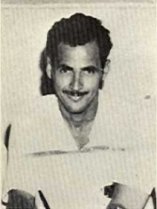 History
History 
 History
History 
Before the Europeans came to this island, the Arawak Indians had called it arrowshaped.....Malliouhana.They had dwelled on Anguilla since AD 600 ,as was deduced by an archaeologist who found a vase that dated back to the said date. The Indians had constructed a ceremonial worshipping site to be used by Arawaks from the north eastern Caribbean inside of an underground cave, located at Shoal Bay. The cave is 70 feet deep and an excellent source of fresh water, in it was found a 16 foot,carved, petroglyph ( a figure carved from stone). The figure depicts the Supreme God of the Arawaks; Jocahu , "Giver of Cassava", the main crop grown by the Arawaks.Twelve other petroglyphs can be found in this cave called The Fountain.
The Arawaks were brown, tall people with long, straight, black hair.They grew cotton from which they made cotton clothing to cover their bodies and to make hammocks. Besides cassava, they ate different varieties of reef fish; conchs, shellfish, whelks. Corn and sweet potato were also cultivated. Their jewellery was crafted from seeds, bones, seashells, and conch shells.
REVOLUTION!
After the English and their slaves had settled on the island they found the weather conditions unfavourable for agricultural cultivation and soon left the island and the slaves behind. Anguilla then became apart of the St. Kitts-Nevis-Anguilla . Anguillians proved to be very proud people not wanting to succumb to the neglect they had experienced while under St. Kitts' "rule".
Mr. Atlin Harrigan,OBE, wrote this article entitled Revolution was Rumbling Like A Volcano in 1997 for a Commemorative Magazine celebrating the 30th anniversary of the Anguilla Revolution. Mr. Harrigan was a key contributor to the cause and the physical fight that the revolution presented. In this article he relates tot he reader some of the ways in which he was physically involved.
Revolution Was Rumbling Like A Volcano
 The commencement
of the Anguilla Revolution might be likened to the rumblings of the Monsterrat volcano or the early tremors of the Port Royal earthquake in Jamaica. The rumblings and tremors of the Anguilla revolt started in 1825 soon after the island was conveniently annexed to St.Kitts-Nevis. They continued in 1872, 1958 late in 1966 and the big bang came in 1967. The Anguilla Revolution had begun.
It was on 16th January 1967, just prior to my return to my job in St. Thomas, U.S. Virgin Islands, that Pat, Wish Hunte and myself happened upon the late Peter Adams, then Anguilla's elected representative in the St. Kitts Legislature. He was also a member of the committee responsible for arranging local government for Anguilla and Nevis as provided for in the West Indies Act 1967.Mr. Adams gave us a copy of the confidential minutes of meeting held in St. Kitts on 23 December, 1996 which he did not attend.The document was taken to Mr. Ronald Webster and discussed along with the kind participation and help of Canon Carleton, the Anglican Priest in Anguilla at the time. The document was then duplicated and distributed throughout the island. I sent a copy with a covering letter to the Democrat Newspaper in St. Kitts for publication.
It was published on 21st January, 1967.
The commencement
of the Anguilla Revolution might be likened to the rumblings of the Monsterrat volcano or the early tremors of the Port Royal earthquake in Jamaica. The rumblings and tremors of the Anguilla revolt started in 1825 soon after the island was conveniently annexed to St.Kitts-Nevis. They continued in 1872, 1958 late in 1966 and the big bang came in 1967. The Anguilla Revolution had begun.
It was on 16th January 1967, just prior to my return to my job in St. Thomas, U.S. Virgin Islands, that Pat, Wish Hunte and myself happened upon the late Peter Adams, then Anguilla's elected representative in the St. Kitts Legislature. He was also a member of the committee responsible for arranging local government for Anguilla and Nevis as provided for in the West Indies Act 1967.Mr. Adams gave us a copy of the confidential minutes of meeting held in St. Kitts on 23 December, 1996 which he did not attend.The document was taken to Mr. Ronald Webster and discussed along with the kind participation and help of Canon Carleton, the Anglican Priest in Anguilla at the time. The document was then duplicated and distributed throughout the island. I sent a copy with a covering letter to the Democrat Newspaper in St. Kitts for publication.
It was published on 21st January, 1967.
The same day Premier Robert Bradshaw and some of his Labour Government officials arrived in Anguilla to explain Statehood and Local Government at four public meetings. John (Bob) Rogers and I were among those in attendance. Bradshaw threatened that the person who caused the confidential letter to be published could be charged with treason. Although he knew my name he could not fit it with a face. Even many Anguillians at that time had only heard that name Atlin Harrigan but did not know me in person. The car in which Bradshaw was travelling to West End sustained a flat tyre at South Hill. Bob Rogers and I helped him repair the tyre but he had no idea who we were and in particular that I was the person who handled the confidential minutes. On 27th January 1967 Henry Hall, a British official arrived in Anguilla from St. Kitts accompanied by Deputy Chief Minister, Paul Southwell. They were being driven past the Long Path by Charlie Horsford when there was a "boom" sound. Mr. Horsford is quoted as saying: "I said it was a shot; but Hall said "Oh no, the car backfired." Of course it was my gun, but I did not fire it. Two youngsters who are still around had pulled the trigger.
On 4th February, an attempt was made to stage a St. Kitts inspired Statehood Queen Show at the Valley Secondary School. The show was broken up by a number of Anguillians. Two weeks later I was among others charged with committing two offences on that night. The truth is I never threw any stones. I was in fact taken up with laughter to see Bob Rogers throwing stones from the Blue Caribe Bar across the road direct on target on the roof of the school. I had done a surveillance of the generator room earlier in the day and had put a 2x4 length of wood under part of the UF wire taking electricity to the school. I did not cut the cable on the night of the Queen Show, plunging the school into darkness. However, I had arranged for two youngsters to carry out the job telling them to cut, drop and run.... On 6th February, Charlie Fleming and I travelled to St. Thomas on my family's boat the MV Oceanic. The Oceanic soon returned to Anguilla and anchored at the Forest Bay and I flew to St. Maarten then arrived by boat at Captain Bay in Anguilla later that night. I had learned in St. Maarten that the Oceanic was boarded and searched for guns but no weapons had been found. However, the captain, my brother, Kenneth, was arrested in connection with breaking up the Queen Show. He was later released on bail. That was good, because his retention could have prevented the revolution from being a bloodless one. The next morning I awoke to see the frigate HMS Salisbury anchored off Island Harbour. A contingent of St. Kitts police and marines from the battleship came ashore. They searched a number of houses including where I lived. Before they reached my residence I had already left and taken up a concealed place where I could see them. I was on a list of fourteen wanted persons including Ronald Webster. That day they arrested almost all of us except Ronald, David Webster and I. After the intervention of Sir Fred Phillips, the Administrator in St. Kitts at the time, we turned ourselves in. The fines imposed on those found guilty on charges of throwing stones and indecent language ranged from $15 to $35. All the cases were appealed but never came up for retrial.
On 5th February, 1967 the visiting St. Kitts Chief of Police fired his gun in the vicinity of Junks Hole while searching for wanted Anguillians. When the shots were returned he was wounded on a finger. On 27th May, Lloyd's Guest House was fired on by Anguillians who believed that St. Kitts Magistrate was staying there. Shots were also fired at the homes of two Anguillians. Following a public meeting at the Park on 29th May, it was decided that
the St. Kitts Police should leave following day, 30th May. Some thirteen policemen were sent back to St. Kitts on a charter flight and another two by boat. That day we appointed a 15-man Peace-keeping Committee to run the island's affairs pending elections. The same night of the expulsion of the police, a ship was seen manoeuvring to the north off Island Harbour. This was cause for some concern and I found myself with Olive Hodge burying guns. The suspicious looking ship which we thought was a British frigate caused Ronald Webster and Wallace Rey, unknown to each other, to leave the island for St. Martin in two separate boats and from different ports. It was said that they had left for New York to complain to the United Nations that Britain was invading the island. It turned out however that the ship was a French frigate on its way to St. Martin. The following day Webster and Rey returned to Anguilla. Those were some of the very early days of the Revolution.
Throughout the years we moved slowly on, hindered by our lingering links with St. Kitts and the unwillingness of Britain to move to sever them. We were through various conferences, appeals, an invasion, an inquiry and a seperate constitution, which still retained our legalities to St. Kitts, yet we remained fixed in our purpose to achieve self-determination. We eventually won when formal separation was granted in December 1980 after a long and tedious struggle. This account in no way describes all the events of our Revolution or how they occurred. Suffice it to say that it is right for us to celebrate Anguilla Day, 30th May, because to my mind it is the bigger and more historical day of our two National Holidays. The rumblings and tremors referred to above should never be heard or felt in Anguilla again. We have achieved what we wanted. On the question of independence, there is no such thing though countries may have separate laws, constitutions, flags, anthems or currency. The truth is one cannot survive without the other regardless of wealth or size. I take this opportunity to wish every one God's blessings and a happy and peaceful year.
More Anguilla history
Anguilla history heritage trail

| Back to the top | 
|